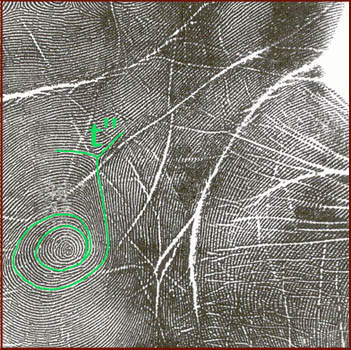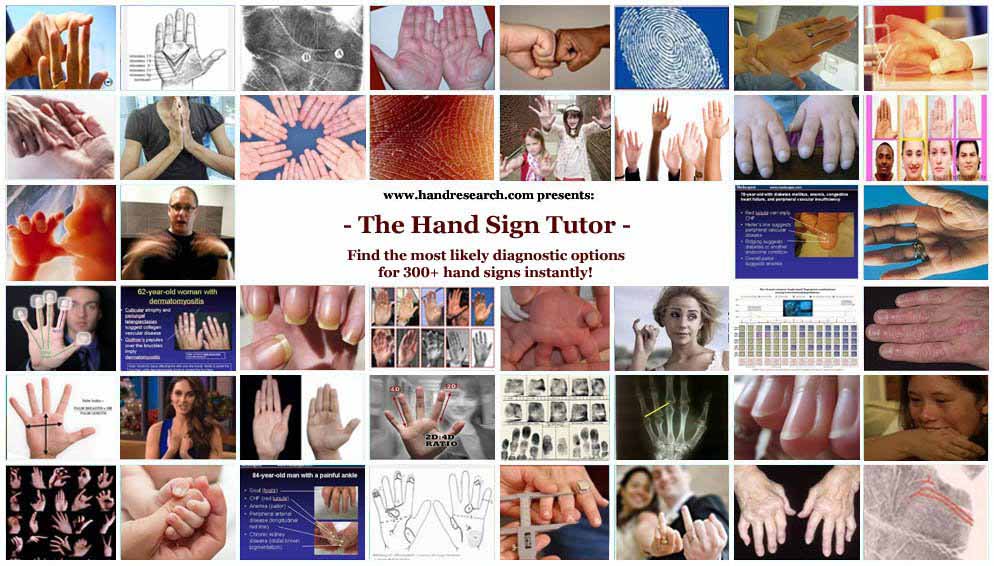Most likely diagnostic options for a hypothenar whorl - this involves a whorl in the lower ulnar side of the palm (ranked by 'weight' for the general population):
- ASSOCIATED PSYCHOLOGICAL CONDITIONS:
• high Agreeableness (A+) [~11% | 1:4 | weight: 0,61]
• autistic spectrum disorder [~16,5% | 1:68 | weight: 0,05]
• schizophrenia [~10% | 1:100 | weight: 0,02]
- ASSOCIATED MEDICAL CONDITIONS:
• trisomy 21 (= Down syndr.) [~15% | 1:700 | w: 0,005]
• arthrogryposis [~25% | 1:10K | weight: 0,0006]
• Turner syndrome [?% | 1:2K | weight: ?]
• Kabuki syndrome [?% | 1:32K | weight: ?]
[1st figure = prevalence hand sign in condition | 2nd
figure = prevalence condition in GP | 3rd figure =
estimated hand sign weight for condition relative
to GP (>0,5 = present in majority of GP)]
|

Quick summary:
only a considerable minorty of hands with a hypothenar whorl score high for the Big Five personality dimension Agreeableness (~13,5% versus only ~4,5% in the general population).
[In every 100 hypothenar whorl cases in the general population (GP) you can expect to find about 61 high Agreeableness cases, 5 autistic spectrum disorder cases, etc.]
|

